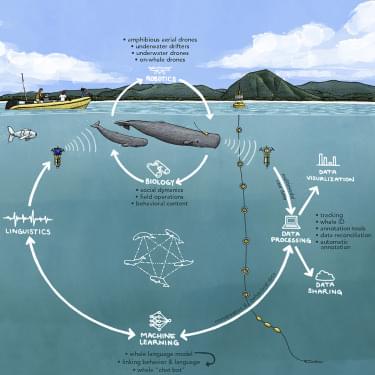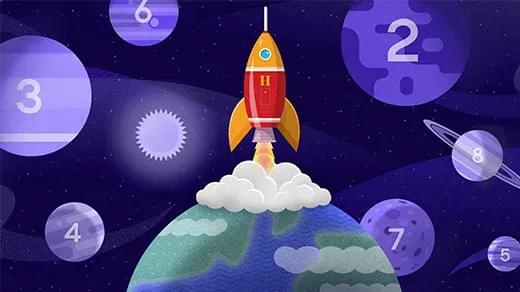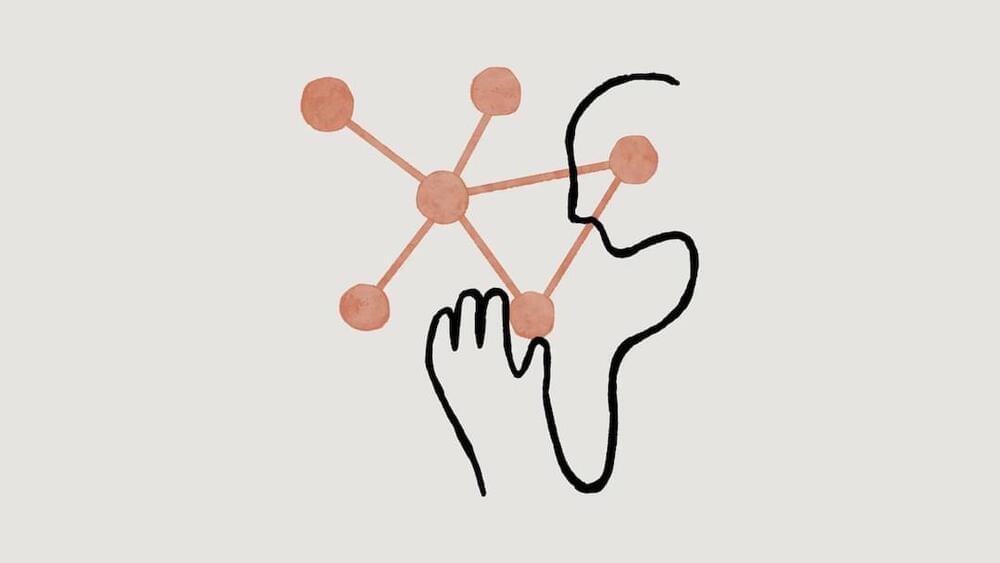The recent success of machine learning (ML) methods in answering similar questions in human languages (Natural Language Processing or NLP) is related to the availability of large-scale datasets. The effort of creating a biological dataset in a format, level of detail, scale, and time span amenable to ML-based analysis is capital intensive and necessitates a multidisciplinary expertise to develop, deploy, and maintain specialized hardware to collect acoustic and behavioral signals, as well as software to process and analyze them, develop linguistic models that reveal the structure of animal communication and ground it in behavior, and finally perform playback experiments to attempt bidirectional communication for validation ( Figure 1 ). Yet, the deployment of graphics processing unit’s (GPU) is following a trajectory akin to Moore’s Law ( https://openai.com/blog/ai-and-compute) and, at the same time, the success of such an endeavor could potentially yield cross-applications and advancements in broader communities investigating non-human communication and animal behavioral research. One of the main drivers of progress making deep learning successful has been the availability of large (both labeled and unlabeled) datasets (and of architectures capable of taking advantage of such large data). To build a more complete picture and capture the full range of a species’ behavior, collecting datasets containing measurements across a broad set of factors is essential. In turn, setting up infrastructure that allows for the collection of broad and sizable datasets would facilitate studies that allow the autonomous discovery of the meaning-carrying units of communication.
A dedicated interdisciplinary initiative toward a detailed understanding of animal communication could arguably be made with a number of species as its focus. Birds, primates, and marine mammals have all given insight into the capacity of animal communication. In some ways, the collective understanding of the capacity for and faculty of communication in non-humans has been built through experimentation and observation across a wide number of taxa ( Fitch, 2005 ; Hauser et al., 2002). The findings on both the underlying neurobiological systems underpinning communicative capacity, and the complexity and diversity of the communication system itself often mirror our ability with which to work with a given species, or the existence of prominent long-term field research programs.
Animal communication researchers have conducted extensive studies of various species, including spiders (e.g. Elias et al., 2012 ; Hebets et al., 2013), pollinators (e.g Kulahci et al., 2008), rodents (e.g Ackers and Slobodchikoff, 1999 ; Slobodchikoff et al., 2009), birds (e.g Baker, 2001 ; Griesser et al., 2018), primates (e.g. Clarke et al., 2006 ; Jones and Van Cantfort, 2007 ; Leavens, 2007 ; Ouattara et al., 2009 ; Schlenker et al., 2016 ; Seyfarth et al., 1980), and cetaceans (e.g Janik, 2014 ; Janik and Sayigh, 2013), showing that animal communication involves diverse strategies, functions, and hierarchical components, and encompasses multiple modalities. Previous research efforts often focused on the mechanistic, computational, and structural aspects of animal communication systems. In human care, there have been several successful attempts of establishing a dialogue with birds (e.g.





